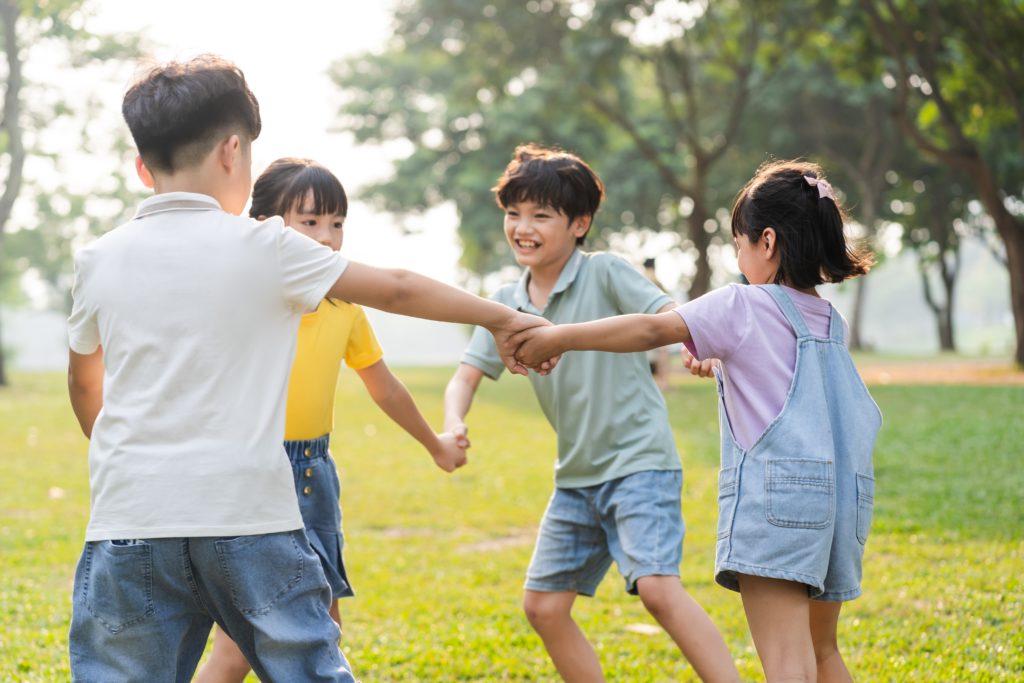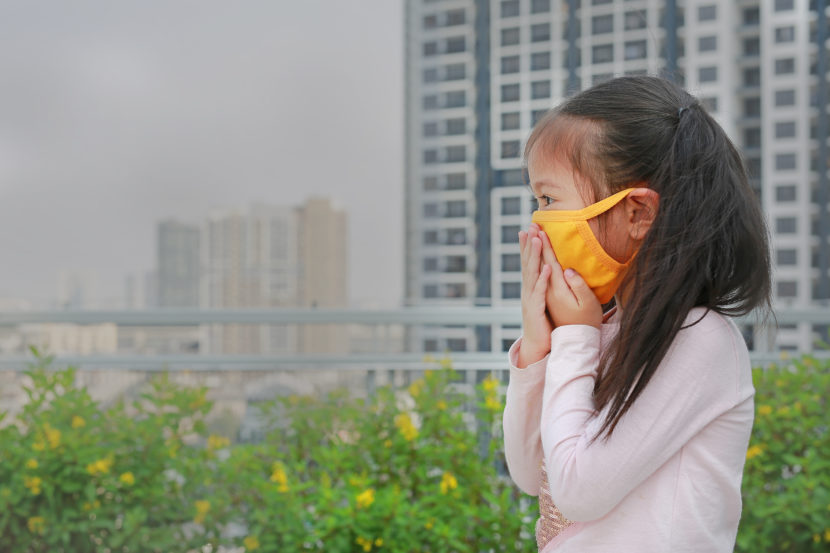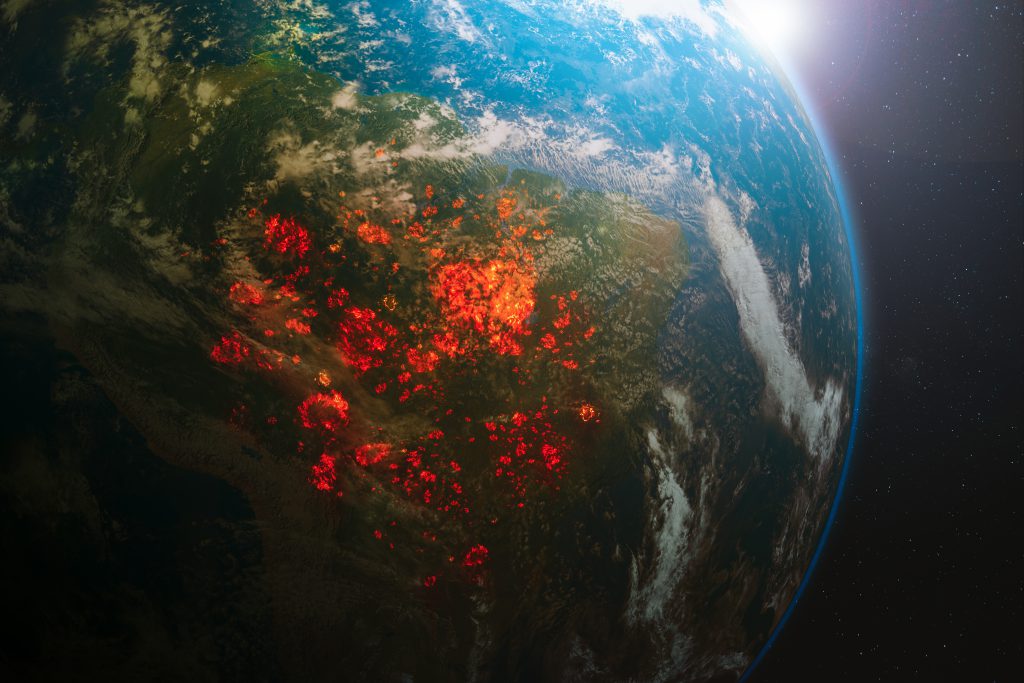Thailand’s air pollution crisis is no longer just an environmental issue—it has become a full-scale public health emergency, with children at its epicentre. Every day, millions of Thai children inhale toxic air, putting their health, development, and future at serious risk. Driven by urban smog, agricultural burning, and industrial emissions, the crisis has turned breathing into a daily hazard for the country’s youngest citizens.
A daily struggle for clean air
The right to breathe clean air is fundamental and is protected under Thai law and international human rights treaties. Yet in 2025, Thailand’s air pollution crisis remains a daily, life-altering reality for millions of children. The smog that blankets Bangkok, Chiang Mai, and other urban centres is a toxic mix of vehicle emissions, industrial fumes, and smoke from agricultural burning.
In 2023, children in Bangkok were exposed to air pollution levels exceeding the World Health Organization’s (WHO) safe threshold on 265 out of 365 days—over 70% of the year—while in London, this occurred on just seven days (Save the Children, 2024). On the worst days, Bangkok’s air quality index soars, and the sight of children wearing masks on their way to school has become commonplace.
The problem of air pollution goes far beyond the capital. Across Thailand, an estimated 13.6 million children are regularly exposed to hazardous concentrations of PM2.5—fine particulate matter that penetrates deep into the lungs and enters the bloodstream (Thai PBS World, 2025; UNICEF, 2025a).
This exposure is especially harmful to children because they breathe faster and take in more air relative to their smaller body size than adults do. Their bodies, organs, and immune systems are still developing, making them particularly sensitive to environmental hazards such as air pollution (Save the Children, 2024).
The silent killer
In East Asia and the Pacific, air pollution causes over 100 daily deaths among children under five—nearly one in four deaths in this age group. The issue extends beyond outdoor exposure, as indoor pollutants from cooking and heating fuels are also a major concern.
A recent UNICEF report reveals that all 500 million children in East Asia and the Pacific are exposed to unsafe air, with 325 million living in areas where PM2.5 levels exceed the WHO safety threshold. Household air pollution from burning unclean fuels indoors accounts for over half of child deaths related to air pollution in the region (UNICEF, 2025b). This form of pollution is closely tied to poverty and inequality, disproportionately affecting girls, who spend more time indoors (Igini, 2025).
Health and developmental impacts of air pollution on children
The effects of PM2.5 are both immediate and long-lasting, with the potential to harm children even before birth and cause chronic health problems into adulthood. Prenatal exposure is linked to low birth weight, premature delivery, and developmental delays. As children grow, polluted air can impair lung development and increase the risk of asthma and persistent coughing (Bangkok Post, 2025; UNICEF, 2025a).
It also affects brain development, contributing to learning difficulties, behavioural issues, and reduced cognitive function (Camillo, 2025). Over time, exposure may lead to serious conditions such as neurological disorders, diabetes, and heart disease (Bangkok Post, 2025).
Long-term consequences include undernutrition—manifesting as wasting and stunting in children under five—as well as heightened risks of respiratory, cardiovascular, developmental, and behavioural disorders (Khezri et al., 2025; Ngamkaiwan, 2025). Additionally, reports of children suffering from nosebleeds and allergic reactions are on the rise, especially in Chiang Mai (The Nation Thailand, 2025a).
Educational disruption and social inequalities caused by air pollution
Air pollution harms more than just physical health—it also disrupts education and reinforces inequality. Children from wealthier families benefit from cleaner environments and greater protection, while those from low-income households often live closer to pollution sources, have limited resources, and face a higher risk of school absenteeism (UNICEF East Asia and the Pacific Regional Office, 2025). This unequal exposure creates a cycle of disadvantage, trapping children in poor health and restricted opportunities, and deepening social divides with every smog season (Save the Children, 2024).
In addition, school closures result in lost access to lessons and safe spaces where children can play and learn (Save the Children, 2025). Low-income families face added economic strain as parents struggle to provide care while maintaining their livelihoods (Merzouk, 2025; UNICEF East Asia and the Pacific Regional Office, 2025).
Even when schools remain open, children often wear masks throughout the day and are deprived of outdoor activities. While some private schools are equipped with air purifiers or clean rooms, most public schools lack such resources, leaving students from underserved communities more exposed to health risks and learning setbacks.
This contributes to higher rates of respiratory illness, stunted growth, and educational difficulties among affected children (UNICEF East Asia and the Pacific Regional Office, 2025). Parents, in turn, can live in constant worry about their children’s well-being.
“I always try to make her wear a mask. I tell her to keep the mask on at all times and to avoid going outside.”
– Lalipthat Prakham, a parent talking about her eight-year-old daughter (Daily Sabah, 2024)

Current efforts to address the issue
In 2022 and 2023, Thailand revised its national air quality standards. However, these standards still exceed the more stringent limits recommended by the World Health Organization (UNICEF, 2025b).
In 2024, Thai lawmakers approved a draft Clean Air Act to regulate emissions from factories, agriculture, and transportation. Although this was seen as a crucial step forward, its implementation has since stalled due to political inaction, lobbying by powerful stakeholders, and weak enforcement of existing measures such as burn bans (Ngamkaiwan, 2025). Consequently, many children continue to be exposed to harmful pollution levels.
Even before the Clean Air Act is fully implemented, UNICEF, Save the Children, and other child-focused organisations have repeatedly called for urgent and coordinated action. They urge the government to expand air quality monitoring, launch targeted health campaigns, and prioritise the needs of children in pollution control efforts, ensuring that schools, playgrounds, and homes remain safe spaces for growth and development (Save the Children, 2024; UNICEF East Asia and the Pacific Regional Office, 2025).
During periods of severe smog, the government has introduced emergency measures to reduce immediate health risks. These include temporary school closures, restrictions on truck movement, and subsidised public transport (The Guardian, 2025).
In Bangkok alone, more than 350 schools—and many more nationwide—have shut their doors to protect children from dangerously high PM2.5 levels (Al Jazeera, 2025). While some private institutions have air purifiers or clean rooms, most public schools lack such protections (Daily Sabah, 2024).
To further safeguard children, authorities have distributed masks and issued regular health alerts urging families to limit outdoor activities and keep children indoors during high-pollution days (Buakod, 2025; The Nation Thailand, 2025b).
Alongside local efforts, young activists across Asia are raising their voices to highlight how the climate crisis, especially air pollution, threatens children’s rights, health, and futures. They urge policymakers to listen and take urgent action (Save the Children, 2024).
What must be done now to protect Thai children from toxic air?
First of all, Thailand must lower its PM2.5 threshold to align with WHO standards and strictly enforce emission limits. This would significantly improve children’s health outcomes (UNICEF, 2025a). Public schools should be prioritised for the installation of air purifiers, clean rooms, and real-time air monitors. When school closures are unavoidable, remote learning and meal programmes must be in place to support children’s learning and well-being.
In addition, enhancing healthcare access in high-risk areas is essential. Families need affordable medical services for pollution-related conditions, while vulnerable households require subsidised air filtration and financial support during school closures (Ngotsyoudom, 2025).
To protect children in the long term, Thailand must tackle the root causes of pollution. This means adopting cleaner transport systems, reducing crop burning, and promoting sustainable agricultural practices (Bangkok Post, 2025).
A truly comprehensive approach must, therefore, involve children and youth in shaping policies, increase public understanding of air pollution risks, and prioritise children’s rights and well-being across all sectors. Strengthening air monitoring systems and delivering timely alerts can help families take precautionary action during smog episodes.
Parents also have a role to play. By checking daily air quality, limiting outdoor activities, encouraging mask use—especially for children with respiratory issues—and pushing for classroom air purifiers, they can take concrete steps to protect their children. Educating children on how to stay safe is equally important. Alongside educators, parents should raise awareness, promote cleaner environments, and inspire youth to take action (UNICEF, 2025b).
Finally, addressing social inequality is key. Low-income communities suffer the most and need targeted support. Ensuring all schools have clean indoor air, regardless of location, will allow every child to learn and play safely.

For millions of Thai children, the fight for clean air is a fight for the chance to grow, learn, and thrive. This struggle cannot wait. Humanium, an NGO dedicated to defending children’s rights worldwide, is calling for greater awareness, stronger policies, and equal access to safe educational environments. Join us in making a difference—volunteer, sponsor a child, or become a member today.
Written by Or Salama
References:
Al Jazeera. (2025, January 24). Air pollution in Thailand’s Bangkok forces more than 350 schools to close. Retrieved from Al Jazeera at https://www.aljazeera.com/news/2025/1/24/more-than-250-schools-close-in-bangkok-as-air-pollution-soars, accessed on June 11, 2025.
Bangkok Post. (2025, February 6). UNICEF: Air pollution killing 100 Asian children daily. Retrieved from Bangkok Post at https://www.bangkokpost.com/world/2955446/unicef-air-pollution-killing-100-asian-children-daily, accessed on May 25, 2025.
Buakod, N. (2025, January 31). Health alert! The hidden dangers of outdoor exercise: PM2.5 and ozone’s impact on long-term health. Retrieved from Asian Institute of Technology at https://ait.ac.th/2025/01/health-alert-the-hidden-dangers-of-outdoor-exercise-pm2-5-and-ozones-impact-on-long-term-health/, accessed on May 27, 2025.
Camillo, A. (2025, February 25). ‘Growing up in the haze’: How air pollution impacts children’s health. Retrieved from Impakter at https://impakter.com/growing-up-in-the-haze-how-air-pollution-impacts-childrens-health/, accessed on May 27, 2025.
Daily Sabah. (2024, March 13). Thai children fall victim to Bangkok’s air pollution. Retrieved from Daily Sabah at https://www.dailysabah.com/life/thai-children-fall-victim-to-bangkoks-air-pollution/news, accessed on June 2, 2025.
Igini, M. (2025, February 10). Over 100 daily child deaths linked to air pollution in East Asia, Pacific: UNICEF. Retrieved from Earth.Org at https://earth.org/over-100-daily-child-deaths-linked-to-air-pollution-in-east-asia-pacific-unicef/, accessed on June 2, 2025.
Khezri, R., Jahanian, S., Gholami, M., & Rezaei, F. (2025, January 23). The global air pollution and undernutrition among children under five. Retrieved from Scientific Reports at https://www.nature.com/articles/s41598-025-87217-y, accessed on June 4, 2025.
Merzouk, N. (2025, February 8). The silent killer: Tackling air pollution in East Asia and the Pacific. Retrieved from Thailand Business News at https://www.thailand-business-news.com/environment/193498-the-silent-killer-tackling-air-pollution-in-east-asia-and-the-pacific, accessed on June 4, 2025.
Ngamkaiwan, C. (2025, January 31). Sugarcane’s ‘Black Snow’ Is Worsening Bangkok’s Air Pollution Crisis. Retrieved from The Diplomat at https://thediplomat.com/2025/01/sugarcanes-black-snow-is-worsening-bangkoks-air-pollution-crisis/, accessed on May 20, 2025.
Ngotsyoudom, S. (2025, January 24). More than 250 Bangkok schools close over air pollution. Retrieved from The Laotian Times at https://laotiantimes.com/2025/01/24/more-than-250-bangkok-schools-close-over-air-pollution/, accessed on May 21, 2025.
Save the Children. (2024, February 20). Bangkok’s children exposed to toxic air seven out of ten days in 2023 – Save the Children. Retrieved from Save the Children at https://www.savethechildren.net/news/bangkoks-children-exposed-toxic-air-seven-out-ten-days-2023-save-children, accessed on May 21, 2025.
Save the Children. (2025, January 22). Nine of 10 cities with worst air pollution globally in Asia with schools closed in some cities. Retrieved from Save the Children at https://www.savethechildren.net/news/nine-10-cities-worst-air-pollution-globally-asia-schools-closed-some-cities, accessed on June 3, 2025.
Thai PBS World. (2025, January 17). Thailand losing war on PM2.5 as country enters another year under smog. Retrieved from Thai PBS World at https://world.thaipbs.or.th/detail/thailand-losing-war-on-pm25-as-country-enters-another-year-under-smog-/56191, accessed on June 4, 2025.
The Guardian. (2025, January 24). Pollution-hit Bangkok closes hundreds of schools and offers free public transport. Retrieved from The Guardian at https://www.theguardian.com/world/2025/jan/24/bangkok-pollution-hundreds-schools-closed-free-public-transport, accessed on June 11, 2025.
The Nation Thailand. (2025a, February 26). Air pollution illnesses in Thailand hit 12.3M in 2024, North worst: NESDC. Retrieved from The Nation Thailand at https://www.nationthailand.com/news/general/40046779, accessed on June 14, 2025.
The Nation Thailand. (2025b, March 22). Chiang Mai dust crisis worsens, with more kids having nosebleeds. Retrieved from The Nation Thailand at https://www.nationthailand.com/news/ge$neral/40047729, accessed on June 4, 2025.
UNICEF. (2025a, January 27). Estimated 13.6 million children in Thailand highly exposed to PM2.5: UNICEF. Retrieved from UNICEF at https://www.unicef.org/thailand/press-releases/estimated-136-million-children-thailand-highly-exposed-pm25-unicef, accessed on June 4, 2025.
UNICEF. (2025b, February 6). The silent killer: Over 100 daily deaths of children under five linked to air pollution in East Asia and the Pacific. Retrieved from UNICEF at https://www.unicef.org/thailand/press-releases/silent-killer-over-100-daily-deaths-children-under-five-linked-air-pollution-east, accessed on June 4, 2025.
UNICEF East Asia and the Pacific Regional Office. (2025, January). Growing up in the haze: Addressing air pollution and its impact on children in East Asia and the Pacific: an agenda for action. Retrieved from UNICEF at https://www.unicef.org/eap/media/17471/file/Air%20pollution%20Advocacy%20Brief%20FINAL.pdf.pdf, accessed on June 11, 2025.


